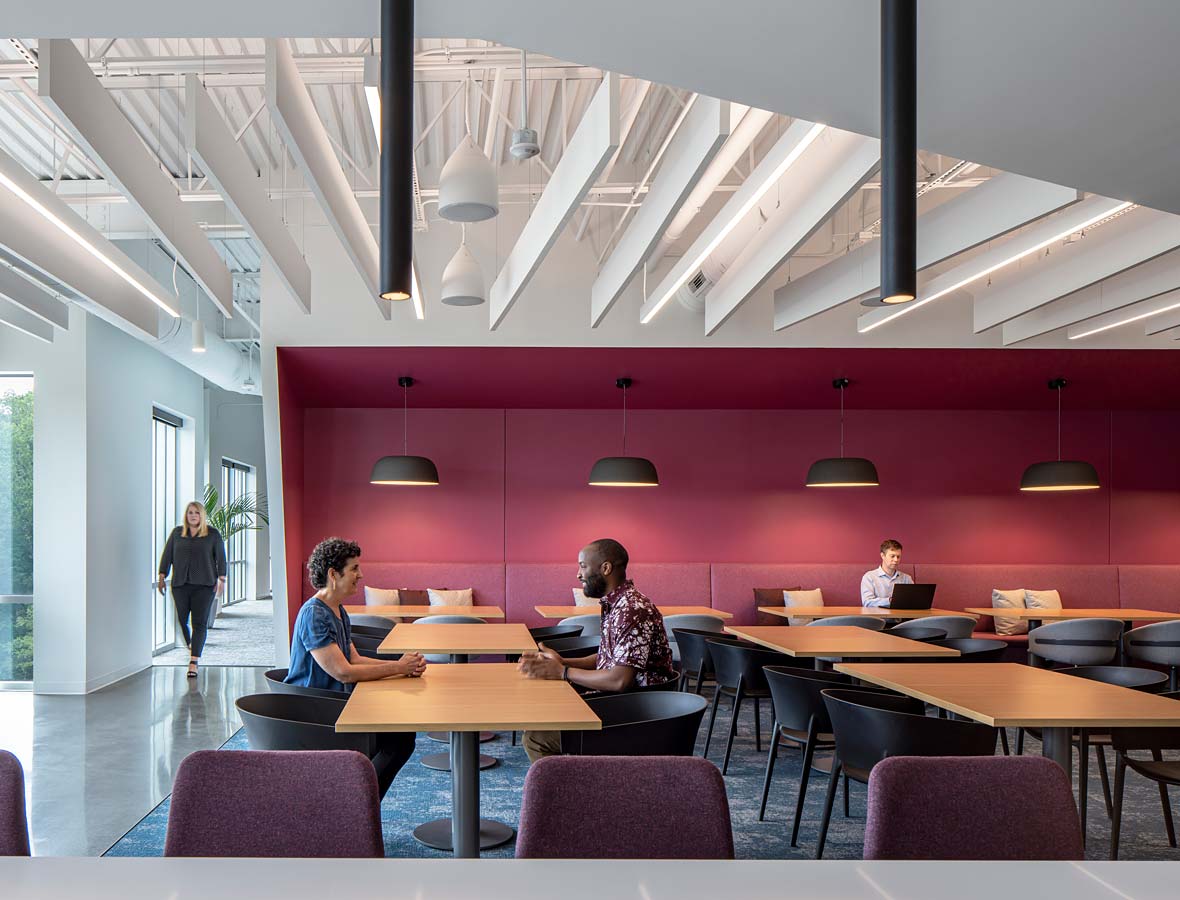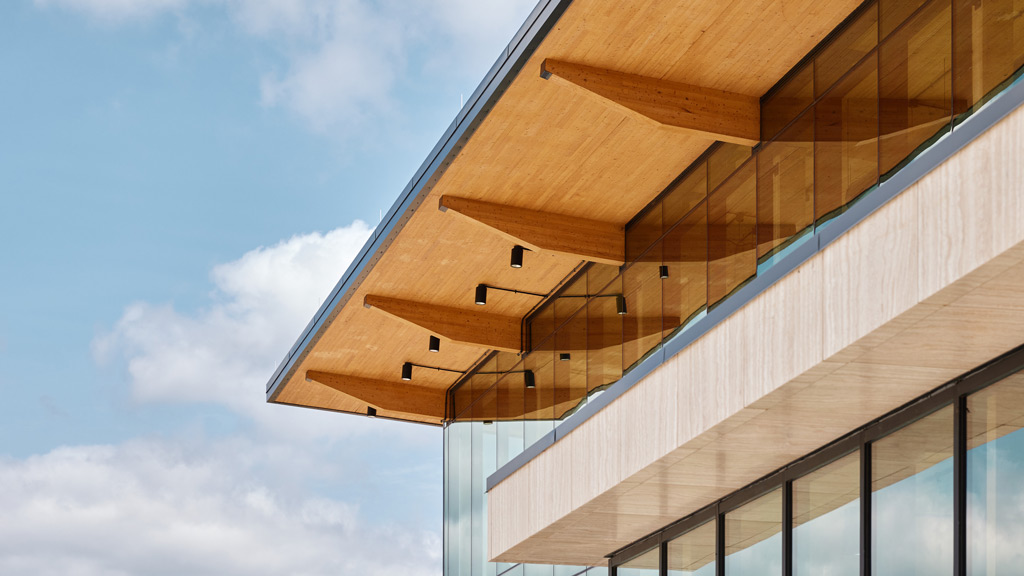Beyond the Property Line: How to Design a Sustainable Material Supply Chain
April 25, 2024 | By Erik Barth
As noted in Andy Cohen and Diane Hoskins’ book Design for a Radically Changing World, in times of radical change, design is our most powerful tool for impact. Global society faces compounding, interrelated challenges like climate change, market volatility, and geopolitical tensions that we have coined ‘crisis multipliers.’ As design professionals, we need to approach the complex crises we face with a comparably complex level of systemic thinking — otherwise, the design solution will fall short. In our work as designers and architects, our impact on climate change through materials selection is between 20-200 times that of the average consumer. We have a tremendous opportunity to broaden our design thinking beyond the property line and holistically address impacts from the interconnected, global system of building materials.
Historically, architectural design has been limited to what lies within the property line of a particular project. This narrow and disconnected view of design scope does not adequately address the wider, real-world impact of design decisions. For example, a wood floor finish was typically selected based on the cost, aesthetics, and product availability alone without full knowledge of impacts from sourcing, use, and disposal. The real impact of a material or systems choice on human and environmental health was hidden from designers and building owners, exacerbating crisis multipliers like climate change and social inequity.
A good analogy to this paradigm is transparency in the food industry. It took decades for the food industry to develop standardized nutrition labels and start to demystify the increasingly complex, processed global system of food production and distribution. Prior to this movement that began in the 1960s, consumers often had little information about the impact of a food product on their health and the environment. In a similar way, the design industry has been ‘driving blind’ and operating without the information necessary to make informed decisions about the impact of building materials. But this precedent is changing.
When it comes to sourcing materials, how do we broaden our design lens to address crisis multipliers in complex global systems? Simply put, two key areas that can drive change are the people and the processes within the framework of the full life cycle of building materials. Industry collaboration and relationships with as many parties as possible interacting with building products are crucial to make lasting, deep change. What if designers asked: who is the first person to interact with this material I am choosing and who will be the last person?
Designers have a moral imperative to consider and collaborate with a wide group of stakeholders that includes not just building owners and occupants but also manufacturers, product harvesters/extractors, and end-of-life managers either directly or indirectly to get a full picture of the impact of a product on both people and planet. Tools to facilitate these connections include community engagement meetings, tenant guidelines, specifications, and green certification systems like LEED, ILFI, Fitwel, and WELL. At Gensler, we employed this type of thinking in the creation of the Gensler Product Sustainability Standards (GPS) by meeting with product representatives and manufacturers to collaboratively set achievable sustainability benchmarks for a variety of high-use building products.

The second area of focus on processes involves employing consistent, standardized methodologies to quantify the real impact of building materials on global systems. Two great examples of these standardized processes are life cycle assessments (ISO 14040) and environmental product declarations (ISO 14025). These standardized measurement and reporting methodologies serve to promote material transparency, enabling informed design decisions. Continued development and implementation of standardized measurement, reporting, and verification processes is one of the highest impact ways the building industry can address the global crises multipliers we face. This can only be done effectively when championed by a collaborative cross-industry group with input from a wide range of stakeholders.
Wood — specifically mass timber structural systems — is a great example in this context. As one of the most popular biomaterials in the construction industry today and a renewable resource, mass timber has been championed as a highly sustainable material option available to designers today. The developing mass timber industry is pioneering a way forward towards material use that has a net positive impact on global systems. The mass timber industry focus has been hastened by the compounding crises associated either directly or indirectly with forests — including forest fires, floods, community displacement, and draught. In June of 2023, unprecedented forest fires in Canada caused air quality in New York City to be the worst in the world for multiple days. Designers can have a direct impact on mitigating forest-adjacent crises with a focus on people and processes.
Regarding timber, this starts by engaging forestry professionals and timber product manufacturers to understand what needs to go in design specifications to facilitate sustainable forest management. At the 2024 International Mass Timber Conference in Portland, Oregon, I sat at a table for lunch with a forester, a manufacturer, a developer, and a structural engineer. The tenor and insight from that conversation alone revealed to me just how powerful cross-industry collaboration can be to address the pressing global crises we face. By engaging a variety of professionals in the materials sourcing and process, we can eliminate blind spots and create space for opportunity. With this industry collaboration in place, standardized measurement tools and processes including EPDs and chain of custody certification systems like FSC and SFI can be leveraged to ensure that wood products in the built environment are being sourced sustainably.
At the end of the day, looking beyond the property line to the larger global context of material cycles will ultimately translate to better project outcomes. Projects that incorporate materials that are good for people and the environment on a global scale ultimately benefit by means of increased employee health and wellness, design differentiation, and a strong sustainability story that can contribute to corporate climate action and ESG goals. For example, the biophilic benefits of using wood as a structural system can translate to increased employee productivity and engagement in person at the office. As demonstrated in Gensler’s NEXT Labs project, buildings that use sustainable materials also perform better and can be aesthetic differentiators in a competitive market. In a time of rapid global change and crises, let’s pay it forward together and trust that the results will ultimately come back around to benefit building owners and users.
For media inquiries, email .

